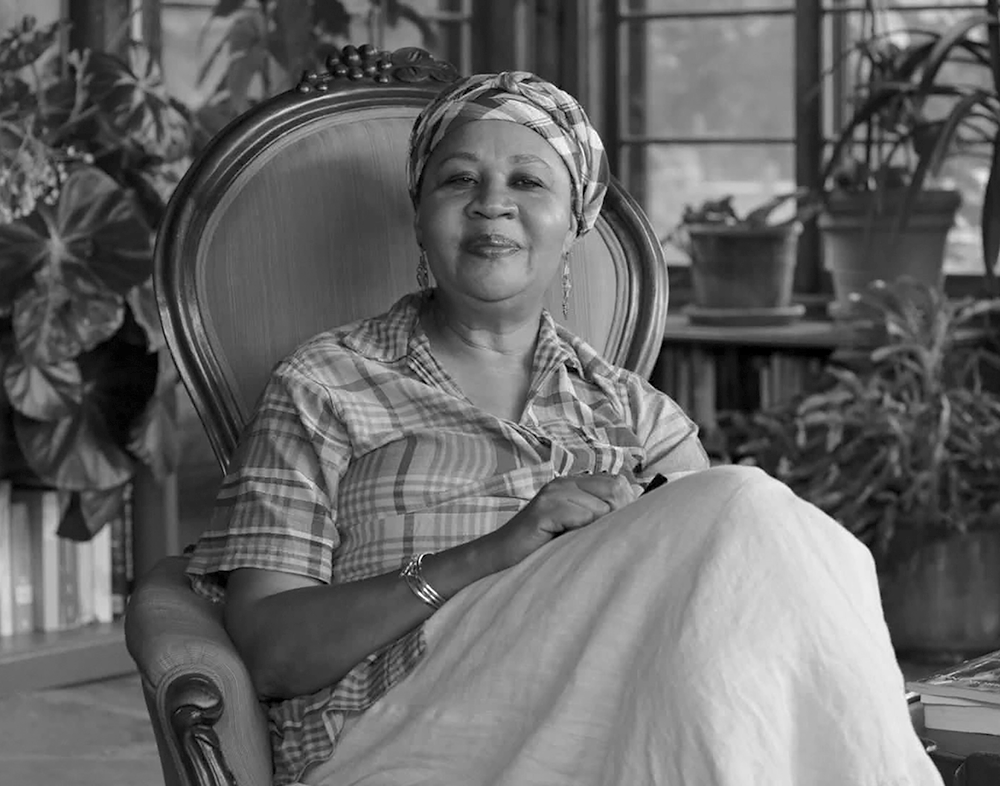Jamaica Kincaid’s Rope of Live Wires
The first novel I read by Jamaica Kincaid was Annie John, the first novel she wrote. She drafted it—as I recently learned from a long-awaited Art of Fiction interview conducted by Darryl Pinckney, which appears in the Review’s Spring issue—out loud in the bath, while pregnant with her daughter, Annie Shawn. Reading Kincaid, I felt emboldened by her wild, inimitable sentences—an invitation to abandon some of the conventions I had learned in school (which no doubt made my own early attempts at creative writing hard to tolerate). Her work provided me and many other readers with something vital, as it did for Kincaid herself. “When I was young, younger than I am now,” she writes in My Brother, her devastating memoir of her youngest brother’s slow and too-soon death, “I started to write about my own life and I came to see that this act saved my life.”
None of Kincaid’s books—five novels, a collection of stories, a children’s book, and five works of nonfiction—has been published under her given name, Elaine Potter Richardson. “Elaine couldn’t write about Elaine,” she explains to Pinckney, “but Jamaica can write about Elaine.” Jamaica writes about Elaine, who in the process becomes Annie, or Lucy, figures who run through Kincaid’s oeuvre like a stubborn rope of live wires. For me, the distinction between memoir and fiction in her work is not determined by proximity to documentary fact—it’s more a question, in each book, of just how much Elaine and her surroundings had to be remade in order to feel real. There is an obsessive quality to Kincaid’s storytelling, and also to her prose. The same anecdote about a mother who burns her daughter’s books might appear in a memoir as an account of the mother’s desire for control, or in an interview as a sign of the world’s unjust disposition toward writers. And in fiction, the daughter is permitted to fantasize about revenge: Lucy, the narrator of Kincaid’s second novel, contemplates burning her mother’s letters at the corners and sending them back unread. It’s a gesture she has “read somewhere, of one lover rejecting another.”
“I’m constantly folding my own memories into the things I’ve learned,” Kincaid tells Pinckney, “like when you’re adding an egg to batter.” Of course, if what she read as a child has since been altered in her memory, she has a better excuse than most of us: her stolen library books were literally destroyed. Kincaid has found ingenious ways to revive and reinvent some of these lost works, even the ones she hated. In school, she was forced to read Wordsworth, whose poems, as she puts it, were used as a “weapon of empire.” Lucy likewise has to read “I Wandered Lonely as a Cloud,” and as a consequence despises daffodils. And yet, as soon as Kincaid had a garden of her own, she planted twenty thousand of them.
Maya Binyam is a contributing editor at The Paris Review.
Copyright
© The Paris Review


